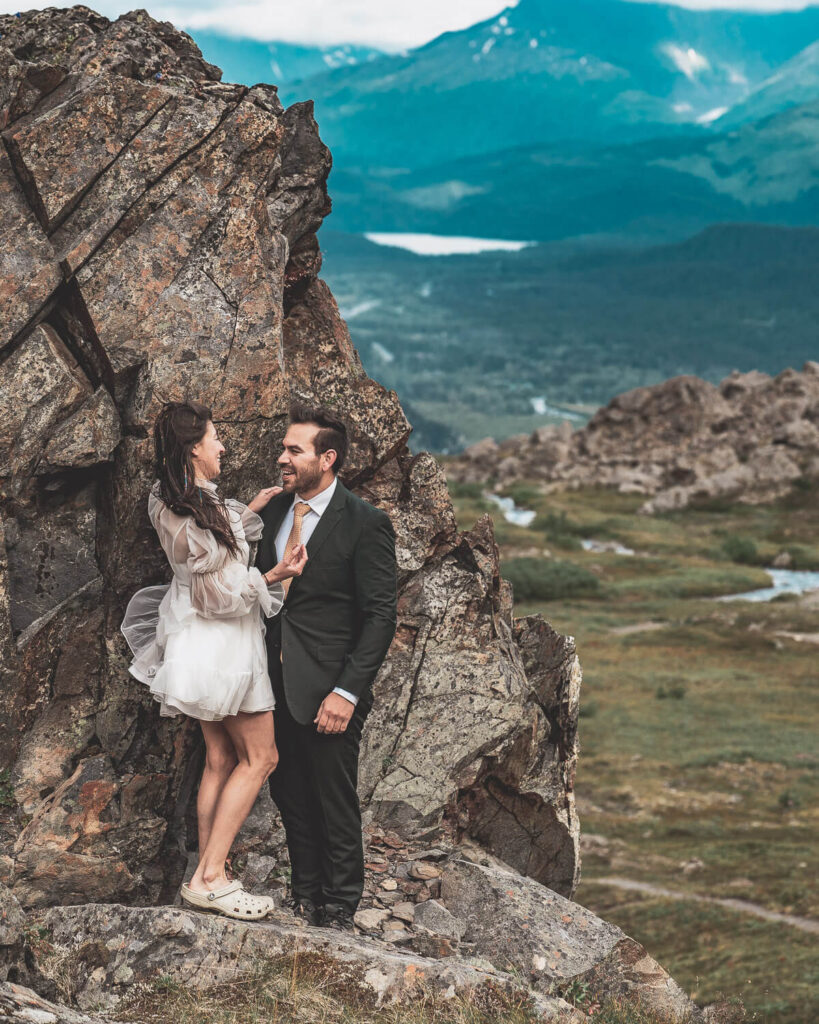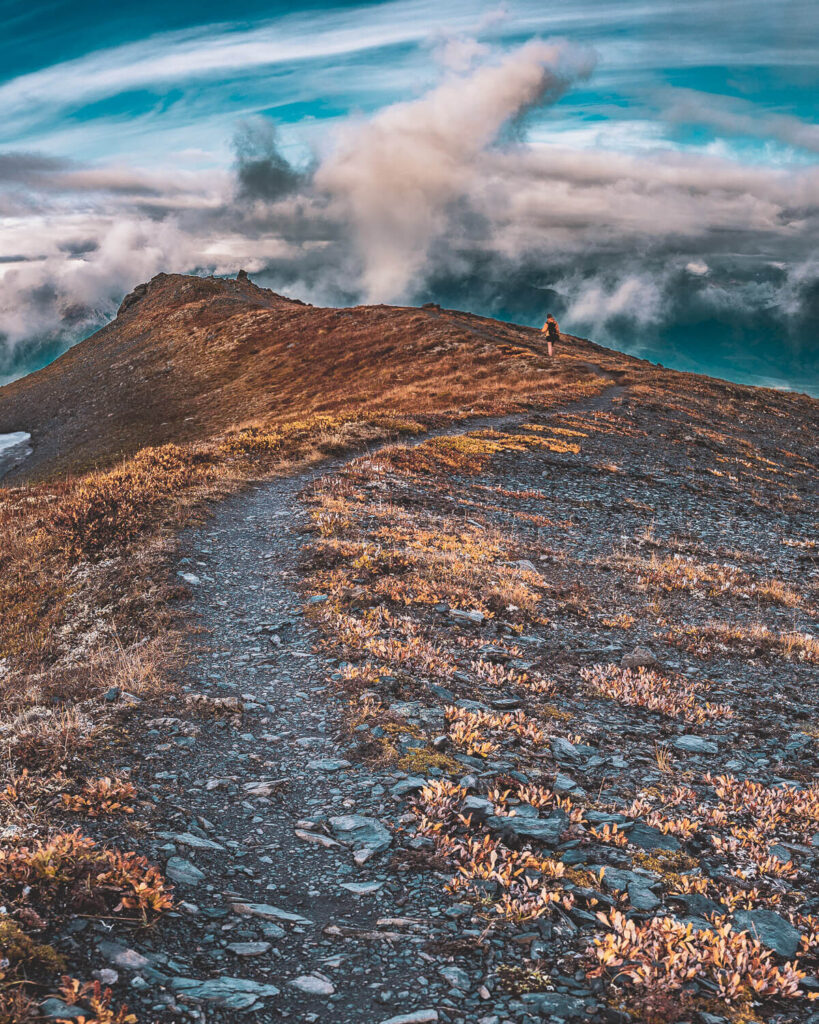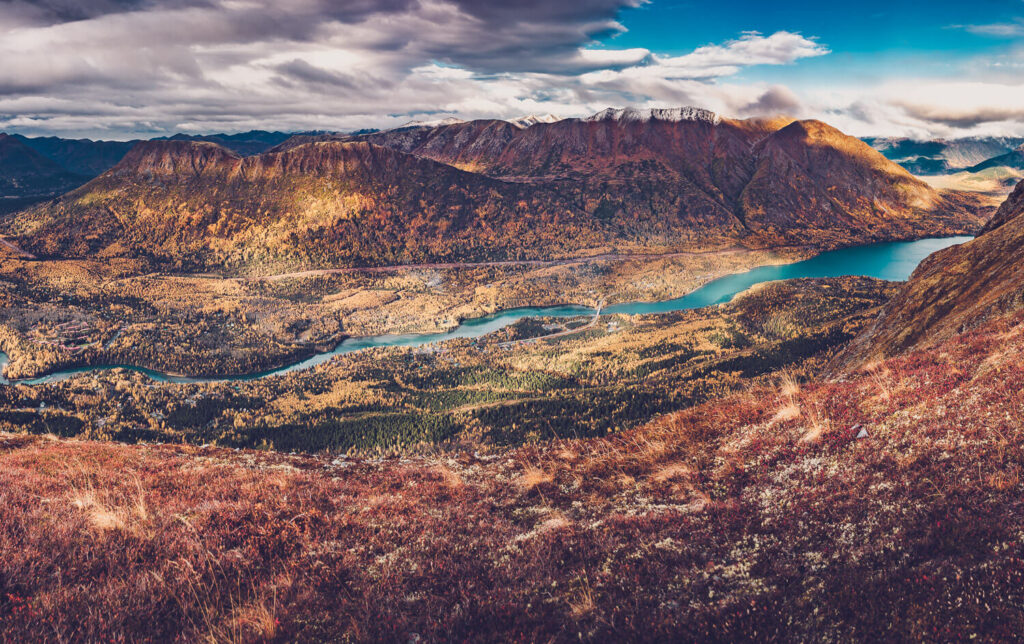So, you’ve settled on a location, or you’re at least considering Alaska and want to know when to go or what to expect in any given season. The main factors to consider when eloping in Alaska are weather and length of day light – both of which vary drastically.
In the dead of winter in South Central, it can be -35F with about 5.5 hours of daylight. In the middle of the summer, temps could be in the high 70’s with almost 19.5 hours of sunlight. I say “sunlight” because it’s really 24 hours of light at that point. Temperatures and daylight (or lack thereof) are even more extreme, the further north you go. So, let’s get into the details of each season.
Winter (December – March)
Most people think of going somewhere warm to elope, but maybe that’s not you. Maybe a winter wonderland is your dream scenery for your elopement. Alaska can be the perfect place for a winter wedding, but you need to know when is the best time.
Early winter in Alaska is very unpredictable. It may snow a foot in October only to melt and be mostly nothing but water or ice in December. Usually, things have stabilized by January. January through March is your best bet for a winter wedding in Alaska. January and February can get pretty cold, but March is a good mixture of winter and early spring weather.
Winter activities could involve ice skating on a lake, visiting frozen waterfalls, ice climbing, snowmobiling, and skiing or snowboarding at Alyeska or in the back country. My dream is to either hike up a mountain in the back country with a couple or get dropped off from a heli and have a ceremony before skiing or snowboarding down. As a long time snowboarder, I’m dying to do an elopement like this.
Daylight: Oof. Sunrise in South Central will be between 7:20 am and 10:10 am, with sunset between 3:345 pm and 8:45 pm.
How to dress:
Full winter gear. Dress in layers so you can adjust to how warm you are during various stages of physical activity. You don’t want your options to just be one big coat or a shirt – you want to be able to have just a shirt, or a t shirt and hoody/jacket, or those layers, plus a coat. Avoid cotton shirts as they will soak up sweat and not breath or dry out easily. Grab some hand and boot warmers for the extra cold days.
Spring AKA Breakup (April – May)
Spring is a messy event in Alaska. It’s called breakup because everything is melting and the ice in frozen lakes and rivers is breaking up. It’s not a good time for a trip to Alaska until late spring. The transitional periods in Alaska are the ugliest, worst times of year to visit. Whether it’s late fall or early spring, everything is dead and looks like a real shit show. Will you get rain? Will you get freezing snow? Nobody knows, but it looks sorta gross on even the nicest day.
The one thing I like about late spring/early summer is that there’s usually some snow patches higher up in elevation that’s dense enough to walk on while hiking up and perfecting for glissading on the way down. It can also make for a very beautiful backdrop with snow capped mountains.

If you want to do any hiking, it’ll probably be late May before you’re not post-holing in snow at higher elevations. At this point, you’ll start seeing some new leaves on the trees and green grass sprouting up.
Daylight:
In May, the sunrise in South Central will be between 4:35 am and 5:18 am, and the sunset will be between 10:35 pm and 11:20 pm.
How to dress:
Temperatures can range from the high teens to high 50’s. There’s still a chance of snow, especially at higher elevations. I wouldn’t bring winter gloves, but some kind of thinner gloves. Late April to sometime in May, I’ll bring a hoodie, hat or neck gaiter, and maybe a wind breaker for higher elevations. I’ll wear trail runners, but will wear wool socks if I plan on getting into any snowy patches (I’ve had too many spring hikes with numb feet to not have learned my lesson).
Summer (June – August)
Ahhh, now we’re getting to my favorite time of year. You can actually go outside without a jacket some days. Everything is looking lush and green. By July, you should start to see the fireweed blooming. Most days will be in the 60’s and 70’s on an average summer, while the evenings could be in the high 40’s and low 50’s.
One of my favorite things about this time of year is the insanely long days. You don’t even need to bother bringing a headlamp until maybe sometime in August. This is the time for epic, long hikes. It’s also the time for lazy mornings and afternoon hikes. You can sleep until noon if you want, and then, go do a 10-12 hour hike and still have daylight the whole time. My girlfriend came up this past August and this is exactly what we did.


Keep in mind, that for photos, if you want that early morning or late evening golden light, this means getting up very early or being out very late. In South Central, Sunrise will be between 4:20 am and 6:50 am, and sunset will be between 9 pm and 11:40 pm.
How to dress:
Temperatures range between 40’s-70’s. On some hikes, I’ll just wear shorts and nothing else (ok, also shoes and socks if we’re being picky). But if you want to be safe, bring a non-cotton shirt and a jacket/wind breaker. August can have some of the hottest days of the summer, but it can also get quite cold, and there’s a risk of catching a snow storm at higher elevations, so pay close attention to the weather. I’ve gone out hiking in shorts in 70 degree weather in August only to get caught in a hail storm on the way back. Anything past early August, I’d bring a hoody and rain jacket, and maybe some thing gloves.

You may actually need sunblock. As you know, the sun barely sets in the summer time, which gives you plenty of time to get burnt if you’re not careful. I don’t worry about it in the winter, spring, or fall, but it’s pretty easy to get burnt in the summer.
Fall (Mid-August – November)
Fall can be a tricky time of year to elope in Alaska, but it can be magical if you happen to time it right. Unfortunately, no one knows how long the leaves will stay on the trees in their fall colors, and no one knows exactly when the snow will hit, especially at lower elevation.
Mid-August through sometime in September is the usual window for autumn colors. Mid to late August is usually the time when the mountain peaks start to get covered in termination dust (first snow of the season). The fall colors and snow capped mountains make for absolutely amazing photos.




By November, everything is dead and the weather is usually pretty gross and highly unpredictable. The fall colors are gone and you could get everything from clear skies to a foot of snow. I would advise not to elope in Alaska in November.
How to dress:
Temperatures can still get into the 70’s in mid-August with the lows in the 40’s. September can get into freezing temps and up to the 60’s. October can be in the teens to the 50’s. You could need anything from a pair of shorts to a full winter coat. Dress in layers and pay attention to the weather reports.
So, there you have it. Hopefully, that gives you a good sense of the different seasons in Alaska and what each season has to offer.




LEAVE A COMMENT
Comments